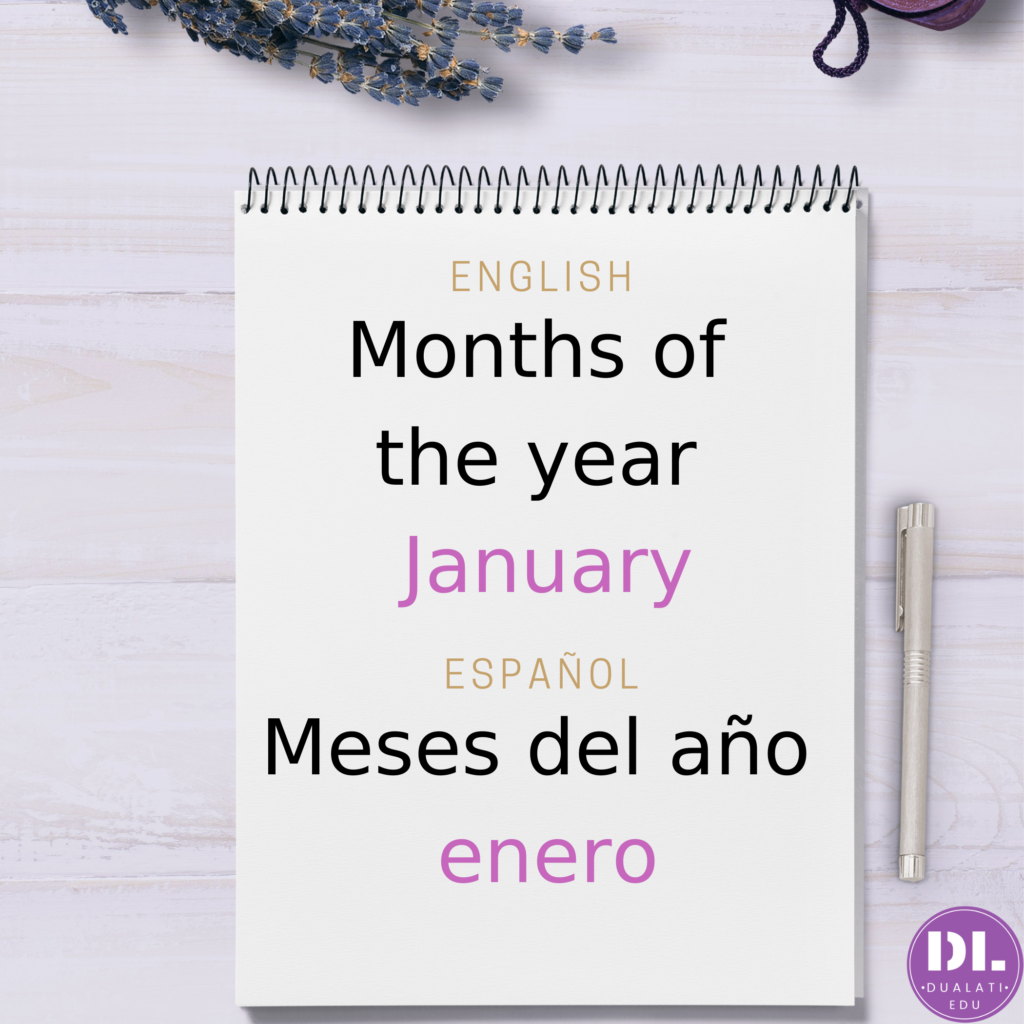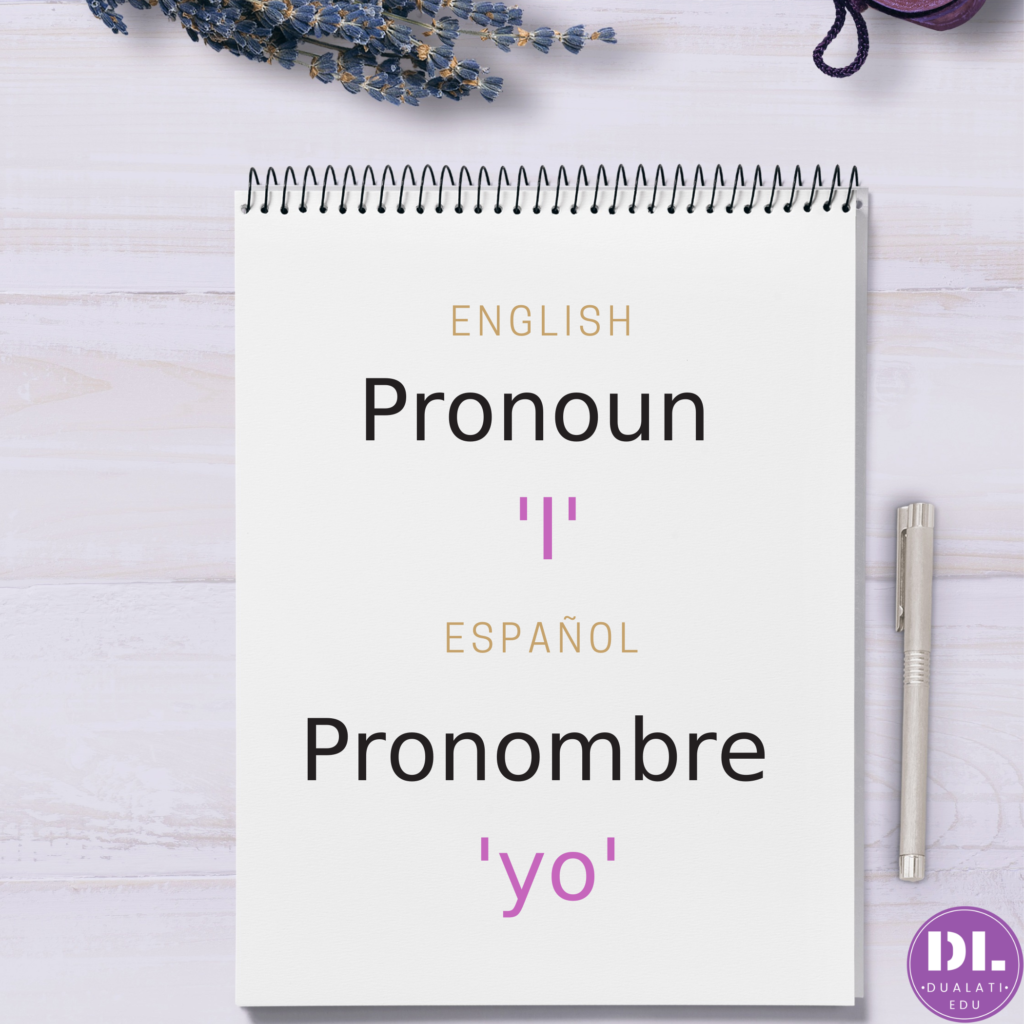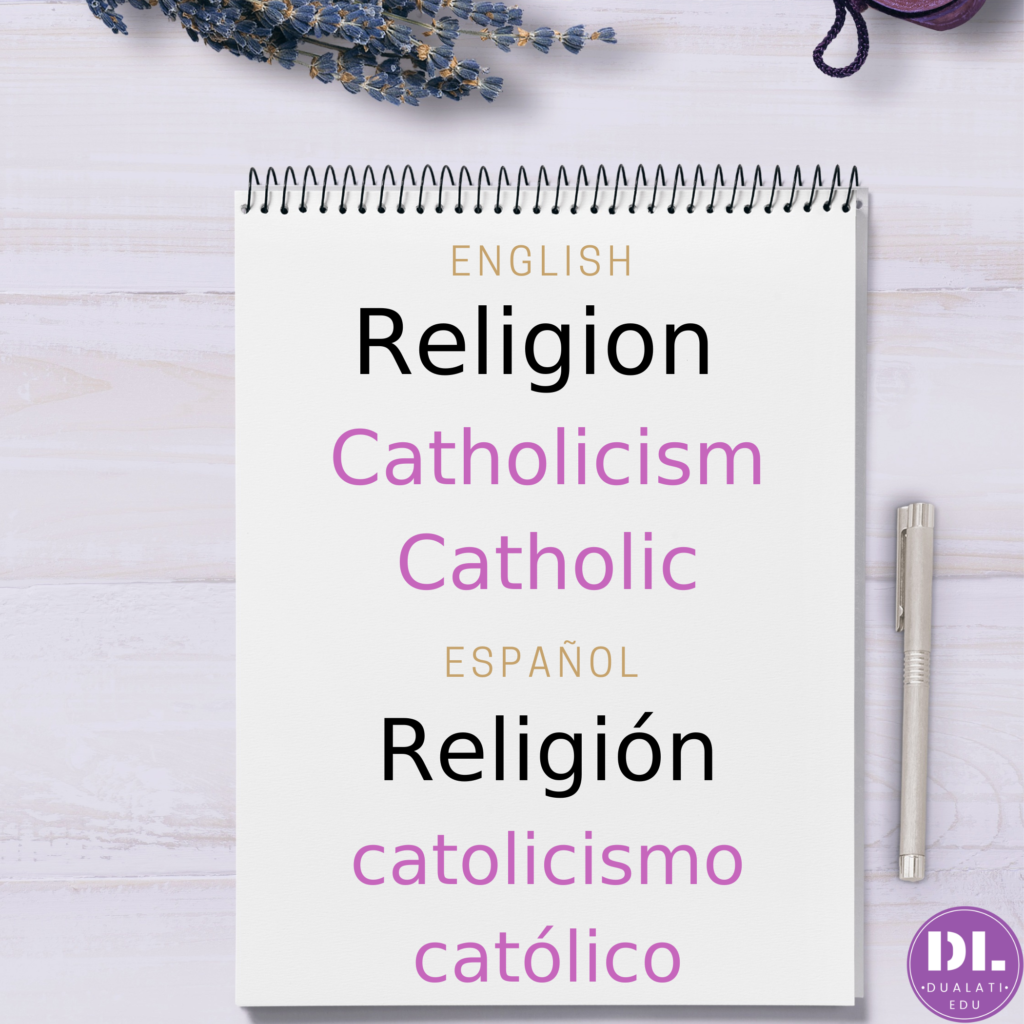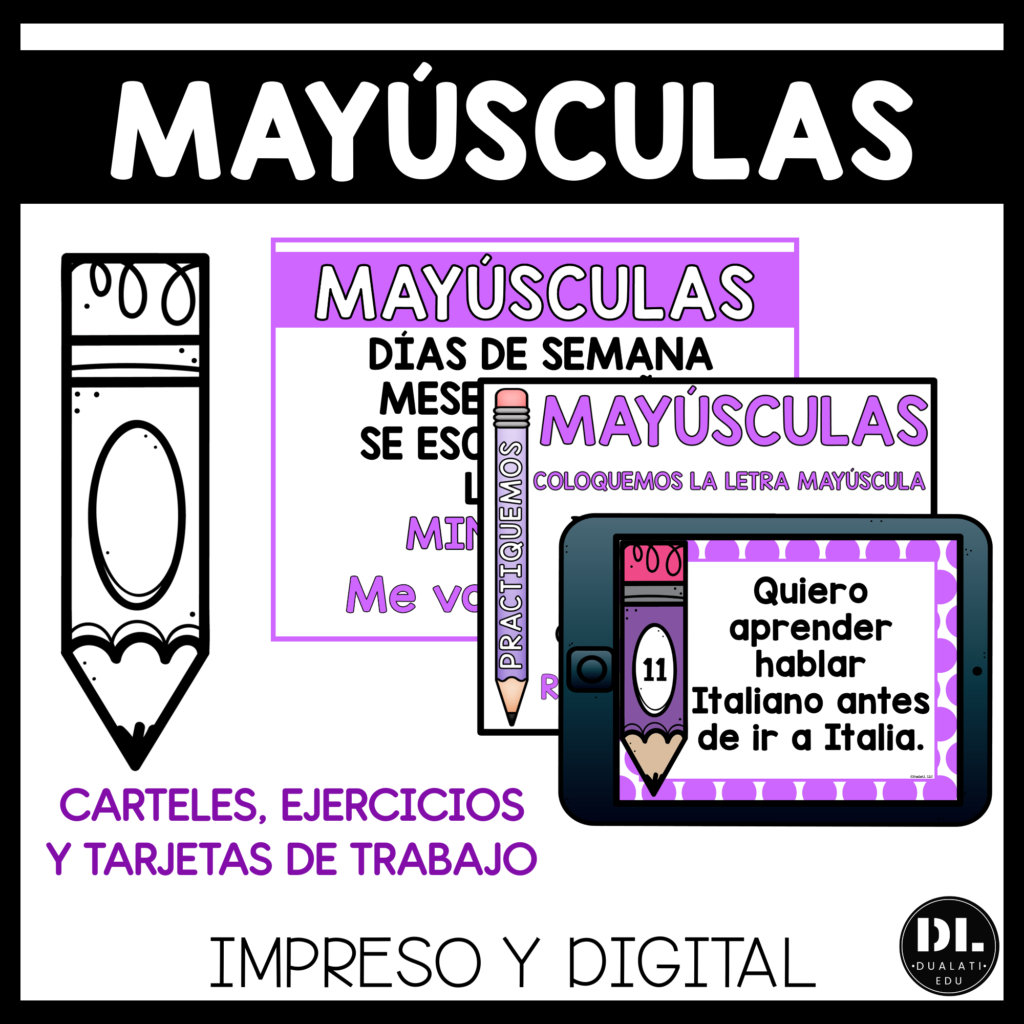Nope! Capitalization rules in Spanish and English are not the same!
There are many more English capitalization rules than Spanish ones.
Capitalization Rules in Spanish
If you want to dive into understanding the complete set of rules for the use of capital letters in Spanish, you need to turn to the Real Academia Española.
Bilingual and dual language teachers consistently focus on teaching cognates and phonology to bridge both languages. However, we also need to include syntax and grammar in our explicit instruction.
Therefore, mini-lessons on the differences between both set of rules can and should be integrated in core content areas.
These mini-lessons will, along with ESL strategies, reinforce biliteracy in any bilingual classroom.
1. Days of the Week – Months of the Year
The calendar is a great way to point out the different rules in both languages.
In English, we capitalize days of the week and months of the year.
However, in Spanish, we do NOT!


Side note: The month goes first when writing the date in English. Example: September 3, 2021 or 9/3/2021
In Spanish, the day goes first. Example: 3 de septiembre, 2021 or 3/9/2021.
2. Nationalities and Languages
Next is another everyday example of when the capitalization rules differ.
In English, capitalize nationalities and languages, but do NOT in Spanish.
Social studies lessons can be great platforms to teach this rule.

3. Titles
In English, capitalize the titles of written or artistic work (books, movies, title, new articles, plays, compositions), nouns, verbs and adjectives. Conjunctions and prepositions are not capitalized unless they are the first word.
In Spanish, capitalize only the first word and proper nouns.
When beginning to read a new book, teachers preview the book which includes discussing the title.

4. The pronoun “I”
The pronoun ‘I’ is always capitalized in English, but that was not always the case. As the word changed throughout the years, it became a single-letter word. It was then capitalized so that it would not be confused as a mistake and to provide the importance that matched its meaning. However, in Spanish the pronoun ‘yo’ is only capitalized at the beginning of a sentence.

5. Religions, Religious Holidays and Religious Writings
Once again, English capitalizes, while Spanish does not. The adjectives that derive from them are also capitalized. However, in Spanish, do not capitalize them.

6. Personal titles
In English, the titles will be capitalized, while in Spanish, they are not.
Note: Capitalize abbreviations of personal titles in both languages. Example: Mrs. Johnson / la Sra. Johnson

7. Names of streets and geographical places
In English, capitalize streets and geographical places, but do not in Spanish.
Note: Capitalize the proper nouns within the names in both.
Teach these differences in social studies lessons!

Capitalization Rules in Spanish Resources
I am glad you have found this information useful! If you need resources teaching capitalization rules in Spanish and other grammar rules, check out my TPT store!



